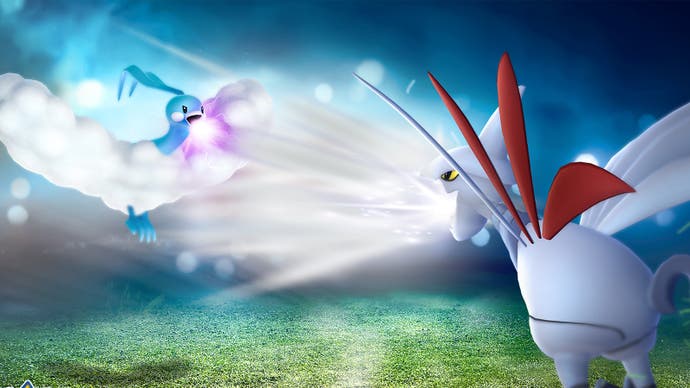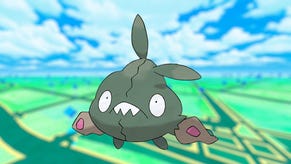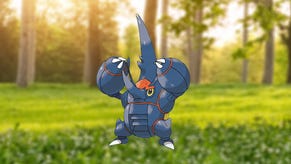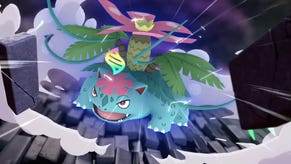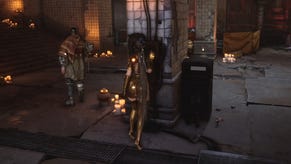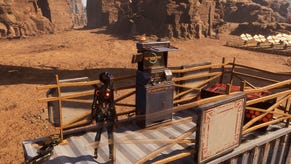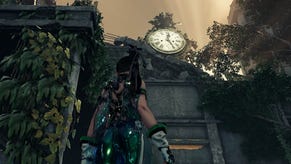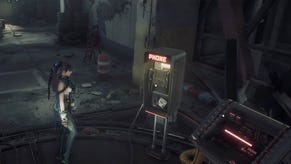Pokémon Go Moves, including how to get a second charge move, Fast TMs, Charge TMs, and DPS explained
How moves work in Pokémon Go since the second charge move update.
Pokémon Go moves have been an integral part of the game - and franchise itself - since its inception, from the damage counters of the Trading Card Game through to the bombastic Z-Moves of Pokémon Sun and Moon.
In Pokémon Go, how moves work and their own effectiveness has changed drastically over time. They are now vitally important in everything from player-versus-player (PvP) battling in the game in the form of Go Battle League to player-versus-environment (PvE) battling in the form of taking down gyms and beating raids.
Getting your head around Pokémon Go's TM system and the different uses for your Pokémon's moves - and indeed figuring out which moves are the best in Pokémon Go – is essential if you want to be the very best like no-one ever was.
Here, we'll start with the basics, explaining how Fast TMs and Charge TMs work, along with how to get a second Charged move in Pokémon Go, and anything else worth knowing, such as DPS and choosing moves in general.
We're also going to look at exclusive moves, how to get Elite TMs, how Elite Fast TMs and Elite Charged TMs work, and then finally, how moves differ between PvP and PvE.
Fast moves and Charged moves in Pokémon Go explained

Unlike the main series games, Pokémon in Pokémon Go can only learn a maximum of three moves at a time, split into two categories: Fast moves and Charged Moves.
When in a battle, tapping anywhere on the screen will make your Pokémon use its Fast Move, which charges up your Charged move. Once your meter is full (shown as the button at the bottom of the screen), you'll be able to tap it to unleash your poweful Charged move
While a given Pokémon's move pool (the full list of moves a Pokémon can learn) is largely reflective of the moves it can learn in the main series games – Mewtwo can't learn Splash and Magikarp can't learn Psystrike – the move pools exist as cut-down versions of the true move pool that a Lv100 Pokémon in the main series game can learn. This is what makes Community Days in Pokémon Go so exciting – they each add an often powerful new move to the featured Pokémon's move pool.
While each Pokémon you catch will know different moves when you catch them, chosen at random when you catch it, you can team them new moves using Pokémon Go TMs. These technical machines, as they were once known, are one-use only, and will teach your Pokémon a random move of that type. A Fast TM will teach a random Fast move from that Pokémon's move pool, for example. If you didn't get the move you wanted, keep using TMs until you get the move you do.
Starting out, each Pokémon will know one Fast move and one Charged move, but there are ways you can upgrade your Pokémon to unlock its hidden potential, granting a second, powerful Charged move.
How to get a second Charged move in Pokémon Go
Getting a second charge move is pretty simple - which makes a nice change - but what isn't so easy, as you'll see, is getting enough resources to unlock one.
To give your Pokémon a second Charged move, simply find it in your storage, scroll down to its moves and look for the button labelled 'New Attack', with a Stardust and Candy cost next to it. Simply press the button and confirm, pay the price, and your Pokémon has a new, alternative charged move! This can indeed be used in both PvP and PvE, although the same move will have slightly different damage levels and effects.
The cost of a second Charged move varies from Pokémon to Pokémon, and is broken down into four tiers:
- 10,000 Stardust and 25 of that Pokémon's Candy
- 50,000 Stardust and 50 of that Pokémon's Candy
- 75,000 Stardust and 75 of that Pokémon's Candy
- 100,000 Stardust and 100 of that Pokémon's Candy
The tier depends on the same thing that affects its walking distance – how rare and powerful the Pokémon is. So, Pokémon that only take 1km of walking to grant a Candy are all in the 10,000 Stardust tier, for instance, whilst all 20km buddy distance Pokémon - namely legendaries and Mythicals - are in the 100,000 Stardust tier.
Given how expensive it is to add a second Charged move, is it worth doing? Absolutely, but only if you're going to use it. Everyone has different levels of resources, but the rule of thumb is that you should only unlock a second Charged move for Pokémon that you are going to use in Go Battle League, unless you really want a second move for Pokémon you want to use in raids – Shadow Mewtwo would be a great example, even if you don't want to use it in Master League.
The World of Wonders season has come to Pokémon Go, which has brought Rediscover Kanto and Sustainability Week, along with the World of Wonders quest. Don't forget to try out Routes, Gift Exchange and Party Play while you're hunting down rare Pokémon, fighting in the Go Battle League or competing in PokéStop Showcases.
Pokémon Go Fast TMs and Charge TMs explained
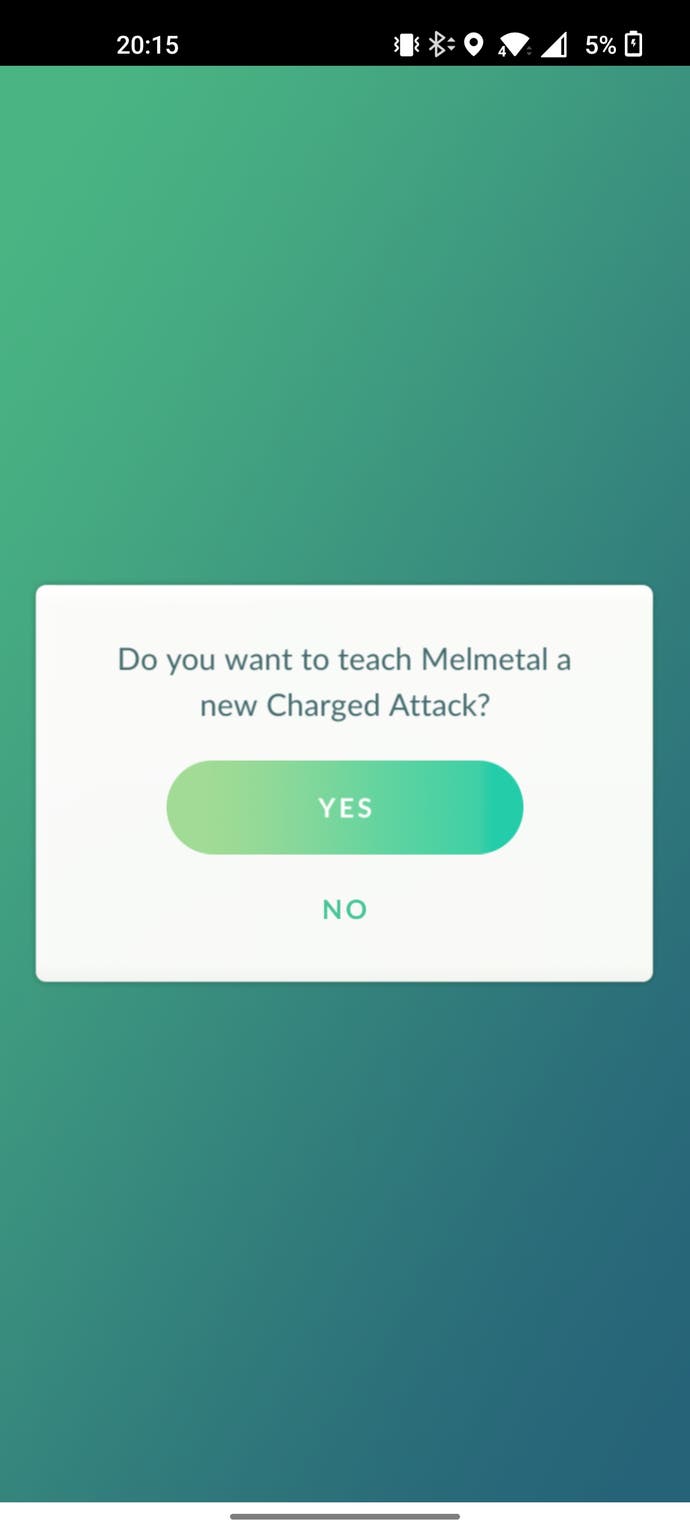
TMs were introduced to Pokémon go with the first raids, and are special items that allow you to change your Pokémon's moves - or more specifically 'reroll' your Pokémon's moves to a random one of the same type within its current move pool.
Using a TM on a Pokémon will randomly reselect one of its moves, with a Fast TM giving you a different fast move and a Charge TM a different Charge move. You're guaranteed to get a different move each time you use a TM, but of course you can only get a move that said Pokémon can learn in the first place.
How to get TMs in Pokémon Go
There's just the one reliable way to earn TMs in Pokémon Go at the moment: raiding. Completing a raid, of any kind, will earn you a chance at being rewarded with Fast and Charge TMs. Although they drop fairly often from high-level raids, you need to complete the raid to earn them. Make sure you always use your free daily Raid Pass to maximise your chances of picking up TMs and you'll have a sizable collection in no time at all.
There are other, less reliable sources of TMs, however – namely the occasional Field Research and Special Research tasks that offer them as rewards. This is much, much slower than the raiding route though, and is more something to be aware of but not rely on.
We advise saving your TMs for when you want to reroll the moves of your best Pokémon in Pokémon Go — the ones that you'll be using a lot, and that have very high IVs, too. That way you know they're not going to be rendered obsolete when you eventually catch a better version!
How to get Elite TMs in Pokémon Go
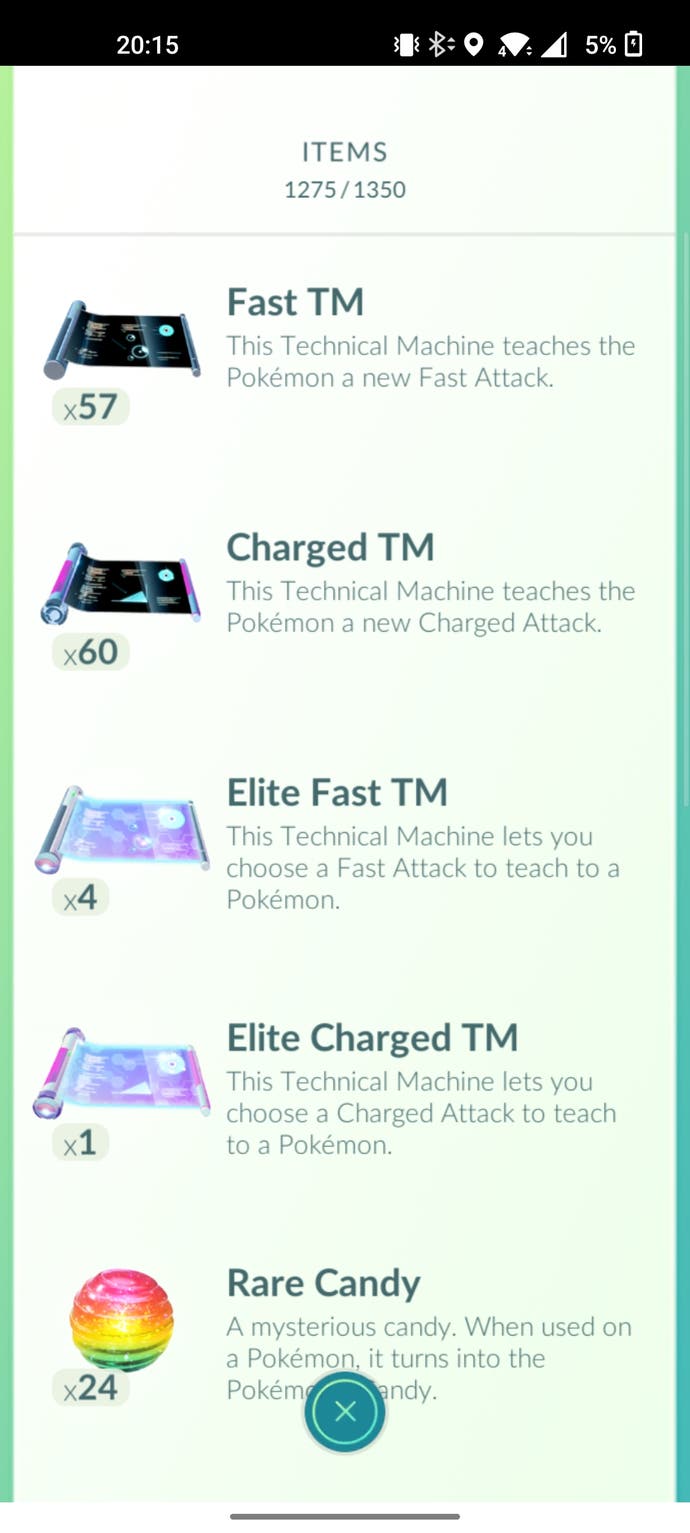
Anyone who has dipped their toes into the waters of Go Battle League will know that not all moves are equal, and not all moves a Pokémon can learn are in the move pool. This actually goes a step further with legacy, exclusive and Community Day moves.
Certain moves that were available in the game before the addition of PvP battles were removed with the advent of Go Battle League. These rare moves are called legacy moves as a result. Community Day moves are moves that a Pokémon can learn if it is evolved during its respective Community Day, and are often either rare legacy moves or moves so powerful that Niantic doesn't want it in the regular move pool. Last, we have exclusive moves – these are similar to Community Day, but are generally learned when catching a Pokémon after a raid, or are Shadow Pokémon's Frustration move or Purified Pokémon's Return move.
So, all Pokémon have three move pools, when you think about it – the regular move pool you can get with a TM, the full move pool that you get in the main series games, and the 'elite' move pool of legacy, exclusive and Community Day moves - to get those, you simply use an Elite TM.
The trick, of course, is getting an Elite TM. Elite Fast TMs and Elite Charged TMs work the same way as their regular version, except for the fact that you can choose which move you want your Pokémon to learn. This makes them so powerful that the only way to get them is by buying them from bundles in the store or through completing the occasional Community Day Special Research story line.
Choosing the best Pokémon Go moves

The best moves to use in Pokémon Go vary depending on two things: the Pokémon and what you want to use it for.
In turn, each move varies on three axes: its speed, its damage per second (DPS) and its elemental type.
The elemental type is obvious - that's the rock-paper-scissors that Pokémon always comes down to: fire beats grass, which beats water, which beats fire. Pokémon that use an attack of its own type get a 20% damage bonus, known as the same-type attack bonus (STAB). So if you've ever heard someone saying that Charizard's Flamethrower does STAB damage, that's what they mean, even if a Charizard walking around like a Tonberry is a great mental image.
This is also where effectiveness and coverage come into play – take Abomasnow as an example. This grass/ice-type Pokémon tends to run one charged move of each type, giving it coverage against flying-type Pokémon. While the flier should beat a grass-type, the relentless barrage of Super Effective ice moves will take down your opponent. Mewtwo is another great example: it can learn Shadow Ball, even though it's not a ghost-type. Ghosts, the natural enemy of psychic-types, is weak against other ghosts. Thus, giving Mewtwo Shadow Ball gives it coverage against what could beat it. This is the real secret sauce to building the best Pokémon in Pokémon Go.
Next is speed: each attack (and by proxy attack animation) has a set speed. Some moves (and animations) are simply faster than others. You tend to find that the more powerful the move, the slower it is to execute, and vice versa. This, combined with how inherently powerful the move is, calculates your damage per second, or DPS.
So, how do you pick the best moves in Pokémon Go? You simply pick a STAB move with high DPS!
Unfortunately, the stats behind these can be tricky to find, so if you want to try your luck in Go Battle League, we have dedicated pages for each of the cups, along with recommended Pokémon and their best moves. These will help you climb the ranks much quicker than relying on trial and error.
Other things to know about moves in Pokémon Go
There's a lot to know about moves in Pokemon Go, so here's some additional information you might find useful:
- The weather is another factor to consider: similarly to STAB, a beneficial weather condition adds a 1.2 multiplier to moves of a certain type. See our Pokémon Go Weather page for more on that!
- Your Pokémon's Attack stat does of course modify the strength of a move by a considerable amount, so it's worth checking out our list of the best, most powerful Pokémon in Pokémon Go where we rank them according to Attack, Defense, and a combination of all stats if you're building a team from scratch. The exact formula for how Attack affects the damage dealt is still unknown at this point, however.
- Some moves are better for defending Gyms than attacking, as Gym defense is automated. The AI will automatically use a Fast Attack every two seconds when defending, and no faster, whilst it will use Special Attacks as soon as they're available, regardless of their strength. That means the likes of Confusion - which has a decent DPS thanks to is high power and slow Animation Time - is instead a very strong move when defending, as all moves' Animation Times are effectively brought up to 2 when defending anyway.
- Other moves are better in PvP as they come with additional buffs and debuffs. Generally speaking, these give a percentage chance to raise or lower your or your opponent's attack or defence. If that sounds complicated, it works like this – something like Power Up Punch has a 100% chance to increase your attack. Muddy Water, however, has a 30% chance to reduce the enemy's attack. These buffs and debuffs only happen in PvP, and are why our recommended moves aren't always simply the hardest hitting ones.
Have fun training your Pokémon!
